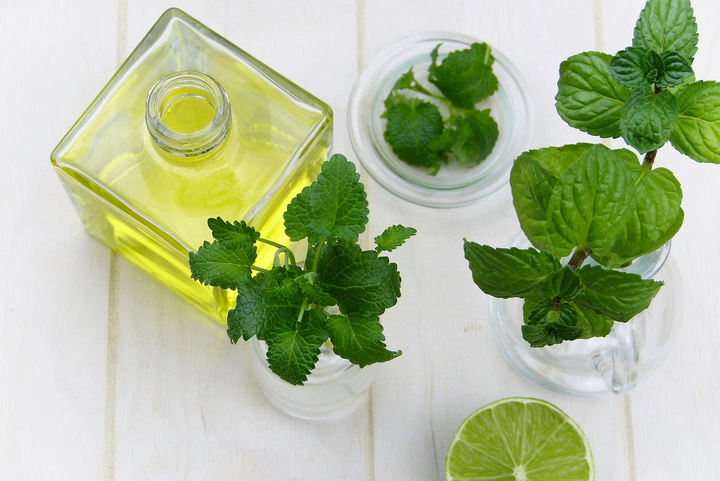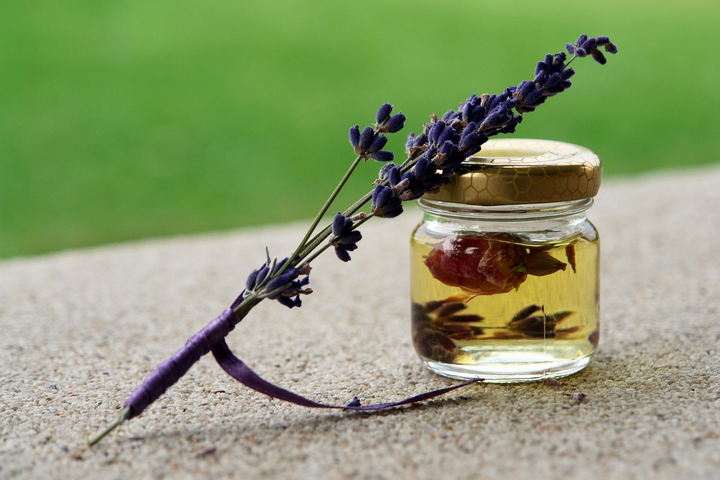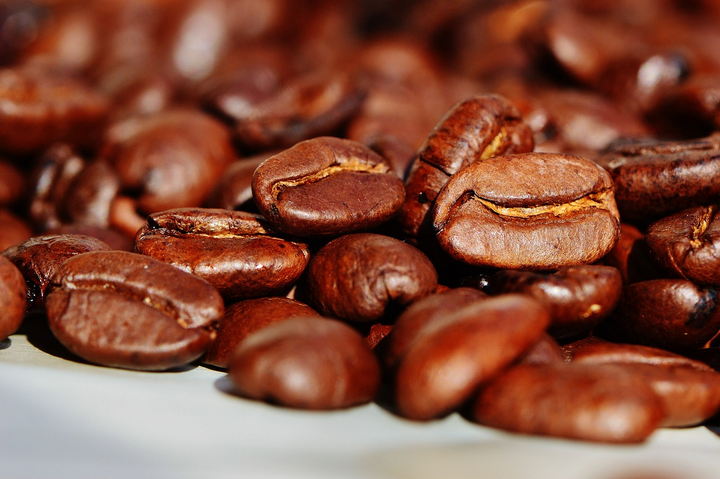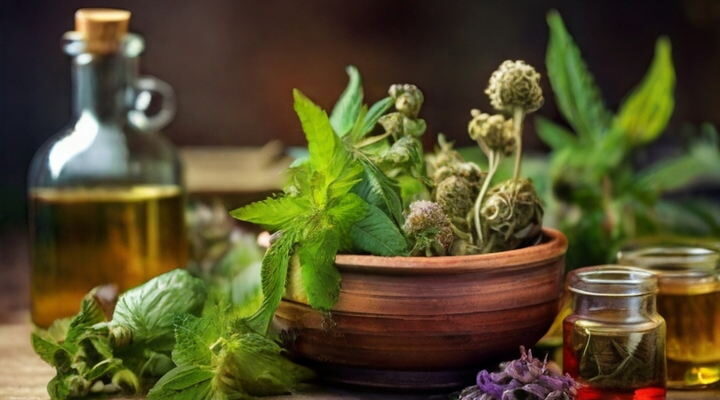Imagine a world where the dull throb of a migraine doesn’t mean reaching for the medicine cabinet. Instead, natural remedies stand ready to ease your pain. Welcome to the realm of herbal remedies for migraine relief—a world where nature’s bounty offers a gentle, yet powerful, respite from the clutches of chronic headaches. Today, we’re exploring 10 potent herbal remedies that promise to turn the tide against migraines, offering solace to those who seek a more harmonious relationship with their bodies.
Migraines aren’t just headaches. They are complex neurological events characterized by intense, debilitating pain. For many, they’re accompanied by sensitivity to light, sound, and even the slightest movement. In our quest for relief, we often overlook the healing powers hidden in plants and herbs, remedies that have stood the test of time, offering a beacon of hope long before the advent of modern medicine.
Yet, it’s not just about what we can add to our lives but also about understanding and mitigating triggers. Hydration stands out as a simple, yet often overlooked, preventive measure. Similarly, ensuring we get a good night’s sleep and employing stress management techniques can significantly impact our migraine experience.
In this exploration, we’re not just listing remedies. We’re building a bridge to a lifestyle that embraces natural solutions and wellness. It’s a testament to the strength found in gentleness, the power of plants, and the undeniable connection between our environment and our health. So, let’s arm ourselves with knowledge and open our minds to the possibilities of herbal remedies for migraine relief.
10 – Peppermint Oil: A Cool Relief for Migraine Sufferers

Peppermint Oil has long been hailed for its soothing, cooling effects, which can be a godsend for those suffering from tension headaches and migraines. When applied topically, peppermint oil creates a cooling sensation on the skin, which can help to relax muscles and ease pain. This effect is attributed to the presence of menthol in peppermint oil, which is known to inhibit muscle contractions and stimulate blood flow in the forehead when applied topically. The cooling sensation not only provides immediate relief but also helps to distract from the pain, offering a natural and accessible form of migraine management.
Moreover, studies have shown that peppermint oil can significantly reduce the intensity and duration of migraine attacks. The application of diluted peppermint oil on the temples and forehead has been compared favorably to other over-the-counter headache remedies, with fewer side effects. This makes peppermint oil a valuable tool in the arsenal against migraines, especially for those looking for a more natural approach to pain management. The ease of use and availability of peppermint oil further underscores its appeal, making it a popular choice among migraine sufferers seeking quick and effective relief.
09 – Ginger: The Anti-Inflammatory Warrior
Ginger is renowned for its powerful anti-inflammatory properties, making it an effective remedy for reducing migraine pain and associated nausea. This versatile root works by inhibiting the synthesis of prostaglandins, which are compounds in the body responsible for triggering inflammation and pain. By reducing inflammation, ginger can help to alleviate the intensity of migraine headaches and provide much-needed relief. Additionally, ginger’s effectiveness in combating nausea is well-documented, offering a dual-action approach to managing migraine symptoms.
The consumption of ginger in various forms, whether as raw slices, in teas, or as supplements, can offer relief during a migraine attack. Research supports the use of ginger as a comparable alternative to traditional migraine medications, with the added benefit of having fewer side effects. This makes ginger a highly attractive option for those who prefer natural remedies. The ease of incorporating ginger into one’s diet, along with its broad range of health benefits, positions it as a top choice for migraine sufferers looking for holistic management strategies.
08 – Willow Bark: Nature’s Aspirin
Willow Bark, often referred to as “nature’s aspirin,” contains salicin, a compound that the body converts into salicylic acid—similar to the active ingredient in aspirin. This natural remedy has been used for centuries to alleviate pain and reduce inflammation, making it particularly effective for treating headaches, including migraines. The anti-inflammatory properties of willow bark can help to diminish the severity of migraine attacks, providing a gentle, yet potent, alternative to synthetic pain relievers.
However, it’s important for users to approach willow bark with the same caution as they would aspirin, especially those with sensitivities to aspirin or those taking blood thinners. The therapeutic use of willow bark for migraine relief exemplifies the power of natural remedies, offering a bridge to the past where nature provided the primary means of pain management. As with any herbal remedy, consultation with a healthcare provider is recommended to ensure safety and efficacy.
07 – Butterbur: A Controversial, Yet Potent Remedy

Butterbur has been the subject of much debate in the realm of migraine prevention. This plant extract was once widely recommended for reducing the frequency of migraine attacks, thanks to its ability to improve blood flow to the brain and reduce inflammation. However, concerns over liver toxicity have led to a more cautious approach in its use. Despite this, the potential of butterbur in migraine management cannot be overlooked, with several studies highlighting its effectiveness in reducing migraine frequency when taken as a supplement.
The key to safely benefiting from butterbur lies in choosing products that are PA (pyrrolizidine alkaloids) free, as these compounds are responsible for the herb’s potential toxicity. This precaution allows migraine sufferers to consider butterbur as part of a comprehensive approach to migraine prevention, under the guidance of a healthcare professional. The history of butterbur’s use, coupled with modern scientific scrutiny, underscores the importance of balance in the pursuit of natural migraine remedies.
06 – Feverfew: The Traditional Migraine Mitigator
Feverfew, a traditional herbal remedy, has been utilized for centuries to combat the frequency of migraine headaches. The plant contains compounds that are thought to reduce inflammation and prevent the contraction of blood vessels in the brain, which can trigger migraine attacks. Regular consumption of feverfew, either in capsule form, teas, or even by eating the leaves, has been reported to lessen the number and severity of migraines for many sufferers, offering a beacon of hope for those seeking natural preventive measures.
While feverfew is generally considered safe for most people, it’s important to be aware of potential side effects and interactions with other medications. As with all herbal remedies, the effectiveness of feverfew can vary from person to person, making personal experimentation and consultation with a healthcare provider essential steps inintegrating it into their migraine management regimen. The journey of exploring feverfew as a migraine remedy emphasizes the broader quest for natural, effective solutions to chronic conditions, reflecting a growing desire to align with nature in the pursuit of health and well-being.
05 – Valerian Root: A Natural Sedative for Migraine Relief
Valerian Root is celebrated for its sedative properties, making it a powerful ally for those battling sleep disturbances and stress-related migraines. By promoting relaxation and improving sleep quality, valerian root can play a crucial role in a holistic approach to migraine prevention. Sleep is often underrated in its therapeutic capacity, especially when it comes to neurological health. For migraine sufferers, achieving restful sleep can significantly reduce the frequency and severity of migraine attacks, making valerian root a valuable component of their migraine management regimen.
Furthermore, the calming effects of valerian are not just beneficial for sleep but also for mitigating the impact of stress on the body. Stress is a well-known trigger for migraines, and by alleviating stress and anxiety, valerian root helps to address one of the root causes of migraines. Its natural sedative effect is achieved without the grogginess associated with synthetic sedatives, offering a more gentle and sustainable option for long-term stress management and migraine prevention.
04 – Lavender Oil: Soothing Aromatherapy for Migraine Sufferers

Lavender Oil has gained popularity as an effective aromatherapy treatment for reducing the severity of migraine attacks. The mere inhalation of this essential oil can induce a state of relaxation and calm, which is particularly beneficial during a migraine attack. Lavender oil works by impacting the limbic system, the part of the brain that controls emotions and memories, thereby reducing stress and anxiety levels, which are often precursors or triggers for migraines. Its ease of use, through diffusers, personal inhalers, or applied topically on temples, makes it an accessible remedy for immediate relief.
The effectiveness of lavender oil in combating migraine symptoms extends beyond its soothing scent. Studies have shown that it can significantly reduce the pain intensity of migraines, making it a promising non-pharmacological treatment. Its safety profile, coupled with its multifaceted benefits, including improving sleep and mood, underscores the potential of lavender oil as a comprehensive treatment for migraines. For those seeking natural remedies, lavender oil represents a harmonious blend of traditional wisdom and modern research, offering a gentle yet powerful tool against migraines.
03 – Coriander Seed: An Ancient Remedy for Modern Migraines
Coriander Seed has been utilized across cultures for millennia, not just as a culinary spice but also for its medicinal properties, particularly in treating sinus pressure and headaches. Its anti-inflammatory potential is what makes coriander seed especially appealing for migraine relief. Inflammation plays a significant role in the development of migraine headaches, and by addressing this underlying cause, coriander seeds offer a path towards mitigating migraine symptoms. Whether used in cooking, teas, or as a supplement, coriander seeds integrate seamlessly into daily life, providing a simple yet effective approach to migraine management.
In addition to its anti-inflammatory properties, coriander seed is known for its analgesic effects, further contributing to its effectiveness in combating migraines. Research into the specific mechanisms through which coriander seed affects migraines is ongoing, but its long history of use in traditional medicine supports its potential as a natural remedy. For those exploring alternative treatments for migraines, coriander seed presents a promising option, combining the benefits of a common culinary ingredient with powerful medicinal properties.
02 – Dong Quai: Traditional Chinese Medicine for Migraine Relief
Dong Quai is revered in traditional Chinese medicine for its ability to treat headaches, fatigue, and inflammation, all of which are relevant to migraine sufferers. Although more research is needed to fully understand its effectiveness against migraines, Dong Quai’s history of use for pain and inflammatory conditions suggests it may offer benefits. This herb works by promoting blood flow and addressing hormonal imbalances, which can be contributing factors to migraine attacks. Its inclusion in herbal blends for migraine relief is based on these traditional uses, offering a natural approach to managing migraine symptoms.
However, it’s important for individuals to approach Dong Quai with caution, especially those with hormonal sensitivities or who are on blood thinners, due to its potent effects. The potential of Dong Quai in migraine treatment reflects a broader interest in leveraging ancient herbal wisdom to address contemporary health challenges. As research continues to unveil the mechanisms behind its efficacy, Dong Quai remains a symbol of the enduring power of traditional remedies in the modern world.
01 – Caffeine: A Double-Edged Sword for Migraine Relief

While not an herb, Caffeine is frequently included in herbal tea blends for migraine relief due to its ability to enhance the pain-relieving effects of standard migraine medications. In small amounts, caffeine can be an effective adjunct to migraine treatment, offering additional pain relief and helping to reduce the severity of migraine attacks. Its mechanism of action includes narrowing the blood vessels that expand during a migraine, thereby alleviating pain. However, it’s crucial for migraine sufferers to be mindful of their caffeine intake, as excessive consumption can leadto migraines as a trigger for some people.
Caffeine’s relationship with migraines is complex. While it can offer acute relief, dependency and withdrawal can exacerbate migraine frequency and intensity. This dichotomy makes caffeine a substance that requires careful management within the context of migraine treatment. Recognizing the right balance and timing for caffeine intake can transform it from a potential headache trigger into a valuable tool in the battle against migraines. For those integrating caffeine into their migraine management strategy, moderation is key. Balancing its consumption can help to harness the benefits while minimizing the risks associated with overuse or withdrawal.
The Role of Diet and Lifestyle in Migraine Management
Migraine attacks are not just about enduring excruciating pain; they’re a complex interplay of genetic, environmental, and lifestyle factors. Among these, diet and lifestyle choices play a pivotal role, offering both triggers and remedies. Understanding the impact of what we eat, how we sleep, and our daily habits can unlock new avenues for managing and potentially reducing the frequency and severity of migraines. This exploration delves into how targeted adjustments can contribute to a comprehensive migraine management strategy.
Dietary Do’s and Don’ts
What we consume can have a profound effect on migraine occurrence. Identifying and avoiding specific food triggers is a crucial step for many sufferers. Common culprits include:
- Aged cheeses
- Processed meats
- Alcohol, particularly red wine
- Caffeinated beverages
- Chocolate
- Foods containing MSG
Conversely, incorporating migraine-preventive foods into your diet can help mitigate symptoms. These include:
- Magnesium-rich foods (e.g., spinach, pumpkin seeds, avocados)
- Omega-3 fatty acids (found in salmon, chia seeds, walnuts)
- High-water-content fruits and vegetables (such as cucumber, celery, berries)
- Whole grains
Lifestyle Adjustments for Better Management
Beyond diet, lifestyle factors contribute significantly to migraine patterns. Key areas to focus on include:
- Hydration: Dehydration is a well-known migraine trigger. Maintaining adequate fluid intake can prevent attacks.
- Sleep Hygiene: Irregular sleep patterns can provoke migraines. Establishing a consistent, quality sleep schedule is vital.
- Stress Management: Chronic stress is a common trigger for many. Techniques such as yoga, meditation, and deep-breathing exercises can be beneficial.
- Regular Exercise: Moderate, regular exercise can reduce the frequency and intensity of migraines. However, it’s important to avoid overly strenuous activities that might trigger an attack.
The Importance of a Holistic Approach
Adopting a holistic approach to migraine management recognizes the interconnectedness of various factors influencing migraine attacks. It’s not just about medication or natural remedies. It’s about how dietary choices, lifestyle habits, and stress management techniques can collectively impact your well-being. Keeping a migraine diary can be an effective way to identify personal triggers and monitor the effectiveness of dietary and lifestyle changes.
In conclusion, while there is no one-size-fits-all solution for managing migraines, integrating thoughtful dietary and lifestyle adjustments offers a promising path to better manage and potentially reduce the impact of this debilitating condition. Embracing these changes requires patience, persistence, and a willingness to experiment and find what works best for you. Remember, always consult with a healthcare professional before making significant changes, especially if you have underlying health conditions or are on medication. Through a combination of self-awareness, proactive management, and professional guidance, it’s possible to craft a personalized strategy that mitigates the frequency and severity of migraines, leading to improved quality of life.


